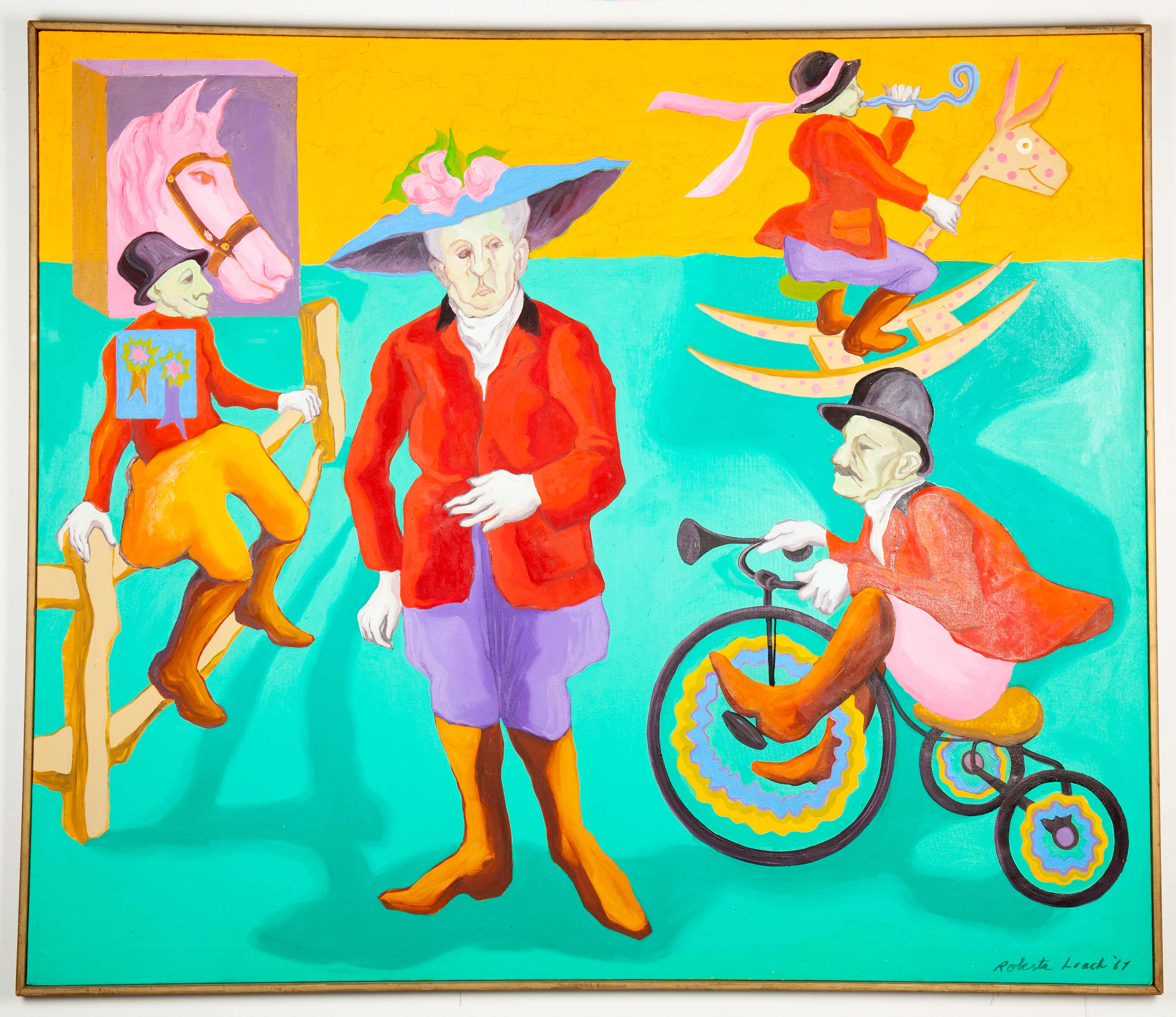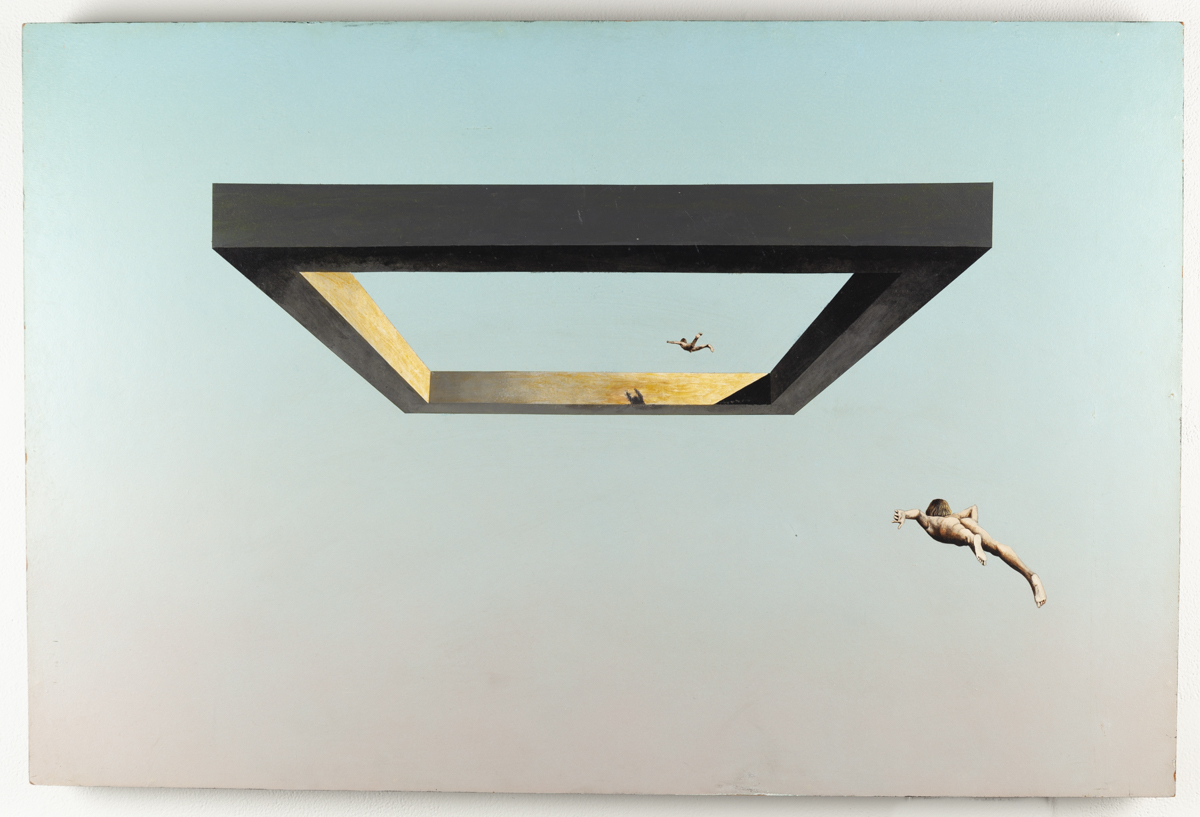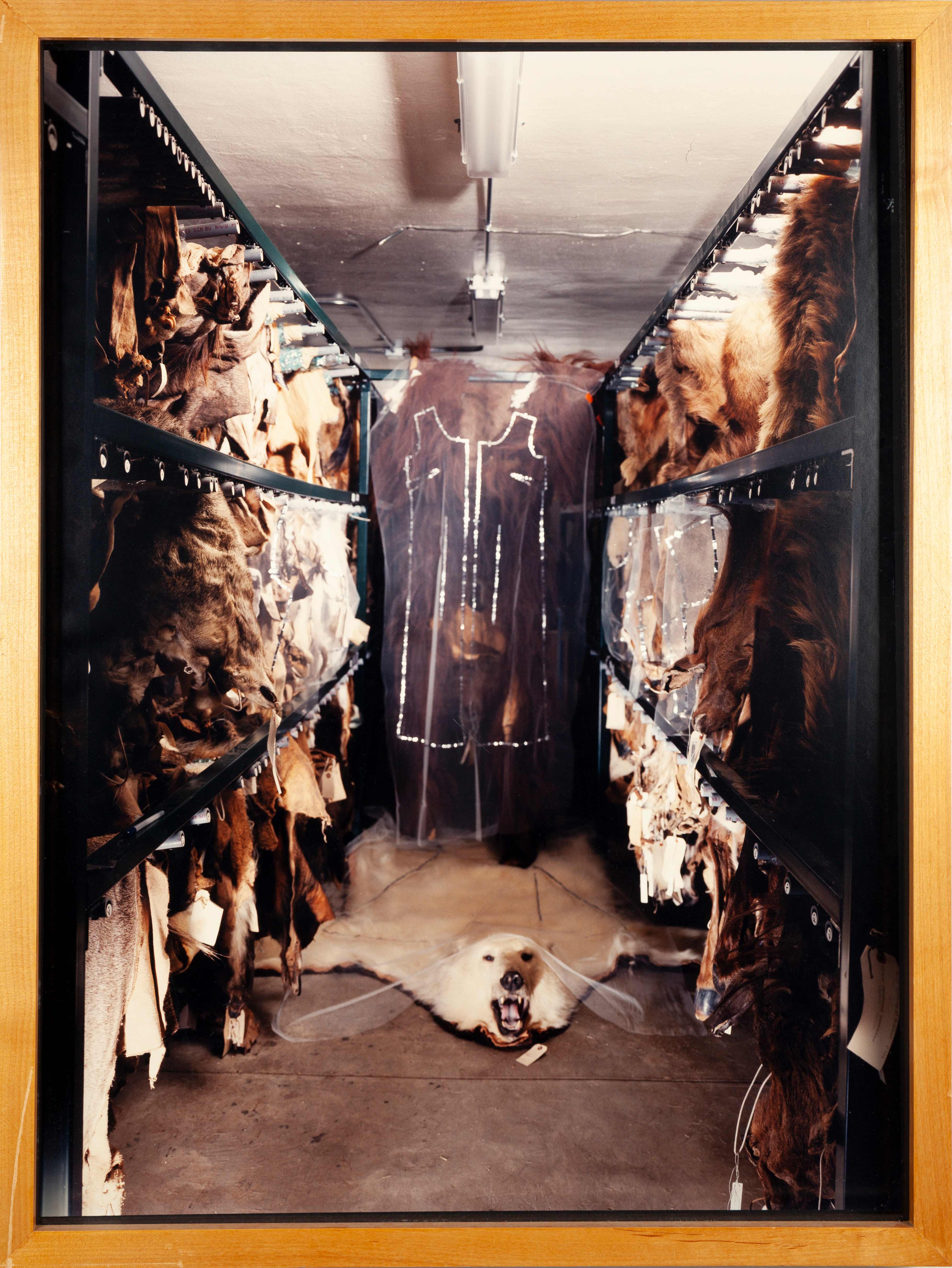Where We Are: Selections from the San José State University Art Collection
The Natalie and James Thompson Art Gallery is pleased to reopen to the public with an exhibition of works drawn entirely from San José State University’s extensive art collection. Inspired by the relationship between the University and the Bay Area art scene, the exhibition includes work by faculty, students, visiting artists and notable regional artists representing the major art historical movements and genres of modern art. Featuring work by Helen Gerardia, Jun Kaneko, Roberta Loach, Dennis Nolan, George Rouault, Paul Staiger and others.
On view September 7 - October 15, 2021
Natalie and James Thompson Gallery

Roberta Loach, Equestrian's Pride, 1967, oil on canvas

Dennis Nolan, Mobilior Ventis Femina, 1968, oil on panel

Lisa R. Gould, WINTER COLLECTION/THE ACADEMY OF SCIENCE, 1997, photograph
Exhibition walk-through with Gallery Director Alena Sauzade
September 7, 2021
In-person tour
September 7, 2021
6-7pm, Art Building 127
Open By Appointment
Wednesday and Thursday, 10am - 12pm
Virtual Exhibition on view September 7- April 1, 2021
Opening in the Natalie and James Thompson Art Gallery nearly eighteen months since the gallery was last accessible to visitors, Where We Are is a gesture of welcome, inviting students, faculty and viewers back to the physical Thompson Gallery and to its companion virtual exhibition space, to engage with and experience a trove of artwork that is too often hidden from view. Overseen by the Art Gallery Director, the San José State University Art Collection comprises 556 objects from faculty, alumni, students, and notable regional and international artists from across a variety of media. Ours is a teaching collection, one that allows for students in Art, Art History and Design to experience art and artifacts first hand and to learn from the work of masters in the fields of ceramics, painting, printmaking, graphic design and more. Moreover, under the stewardship of the university art committee, the collection has a much broader purpose, to serve the university public across disciplines and departments, and to reach out to the wider community of urban San José.
The San José State University Art Collection plays many roles; it is a historical ledger, visual catalogue, and an object-based archive. The collection shows the comings and goings of artists in the South Bay and features artists who taught at SJSU for many years, including: Herbert Sanders, Sam Richardson, Geoffrey Bowman, Linda Walsh, Kenneth Auvil, John Battenberg, Harold Paris and Randall Sadler. It showcases the work of SJSU alumni, some of whom later returned to their alma mater to teach, including: Helen B. Dooley, Roberta Loach, Dennis Nolan, Barbara Rogers, Dennis Roundtree as well as visiting artists, including Rudy Autio and Jun Kaneko.
Also represented in the collection are regional artists, such as David Best and Glenn Wessels and international artists, including Helen Gerardia, Georgios Jakobides and Georges Raoult. Finally, there are artists who took part in exhibitions at the San Jose State University Art Galleries, including Robert Brady, Francis Harvey Cutting, Taisuke Hamada, Joyce Wahl Treiman and June Claire Wayne. Overall, the collection presents a history of experimentation and pushed boundaries, of cultural exchange and collaboration.
By engaging with the University Art Collection through a physical and virtual galleries,
Where We Are considers the question of why academic institutions collect and hold on to art. This
project posits that the university art collection is not just a physical repository
of art objects housed in the art building and largely kept from view, but rather a
historical archive in its own right, one that tells the history of the university
from its inception as San José State College to the present day, and that traces a
history of modern arts movements from Realism, to Impressionism, Fauvism to Abstract
Expressionism. Moreover, the collection is a demonstration of knowledge and skill,
of processes and techniques explored and discovered on our very campus, and of the
experiments that combined an almost scientific methodology with an artistic creativity
and openness to failure and chance.
On our campus, students across the disciplines learn through hands on experiences from some of the finest minds, and the most skilled artists and instructors in the world, and as a consequence, our role as collections stewards incites us to bring the work that is owned by the university, and kept right here in our building: to be viewed, appreciated, and used by our students.
Object based collections such as ours highlight the materiality of objects: their size, weight, texture, their fragility and sturdiness. They show how materials and processes age and highlight the difficulties encountered in storing, moving, or displaying specific works of art. Most importantly, they show our students the products of their work and experimentation in action; while the artists who created some of the pieces we hold may have moved on to a different process or material, the work remains, and its condition, several years, decades, or a century later is an important learning tool for young artists embarking on their own journey of experimentation
What’s more, collections are crucial resources in the development of connoisseurship: a combination of object knowledge, study and appreciation that is oftentimes difficult to define or teach, but that can only be cultivated through sensory engagement and unmitigated access to a diverse range of artwork. In placing these works on display, both in physical and virtual spaces, and soon in a searchable online database, we open the possibility of engagement for and with the viewing public, who bring with them their own stories and histories, and the possibility of connection through art.
In exploring where we have been as a department and a university, the visiting artists we have welcomed, and the exhibitions that have come before, we invite our community to return to our physical gallery space and to discover our new virtual one; to enjoy the viewing of art as a social act; to learn, research, engage and discover the diverse objects that tell a story of where we have been and of where we are.
Alena Sauzade
Art Gallery Director and Collections Manager
San José State University
Special thanks:
Lauren Baines, Interim Director, De Saisset Museum
Adam Shiverdecker, Associate Professor, San José State University
Lydia Black, Central Shops Assistant Technician, San José State University
Kathleen McDonald, Photography Facility Coordinator, San José State University